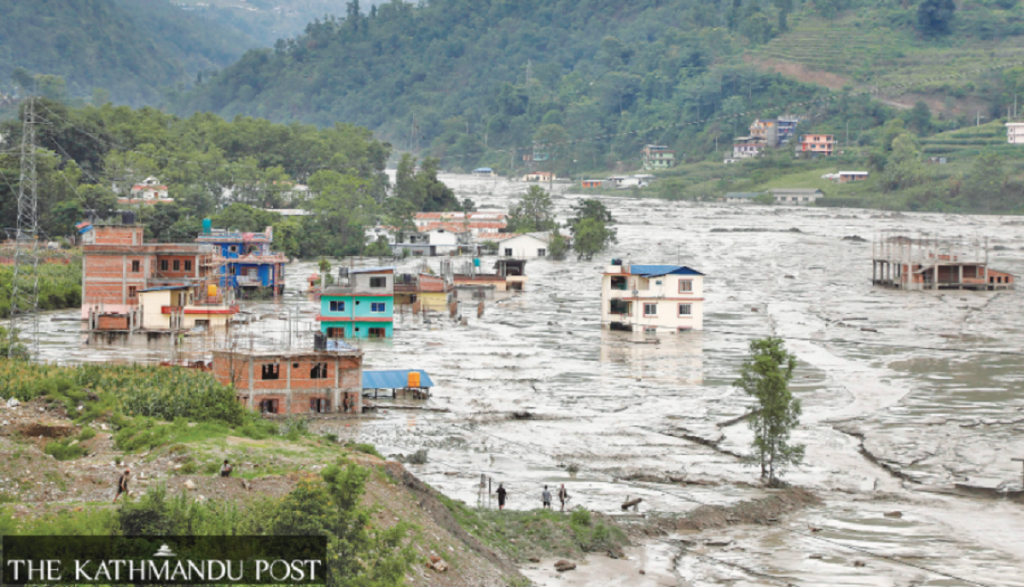Residents of Nepal’s flood-stricken capital began returning to their homes on Sunday to assess the destruction left in the wake of heavy monsoon rains, which have tragically claimed at least 104 lives nationwide.
While deadly floods and landslides occur frequently during the monsoon season in South Asia, experts are raising concerns that climate change is worsening the frequency and severity of these disasters.
This weekend, entire neighbourhoods in Kathmandu were left underwater, with flash floods sweeping through the city and inflicting significant damage on major highways.
Kumar Tamang, a 40-year-old resident from a riverside slum, recounted his harrowing experience.

“We had to flee at midnight as water rushed into our home. Today, everything looks different, with mud blocking our doors,” he told AFP.
Nepal’s home ministry spokesman, Rishi Ram Tiwari, confirmed that 104 people died nationwide and 64 others have been declared missing.
He said efforts to clear blocked highways which have cut off Kathmandu from the rest of the country is underway.
“More than 3,000 people have been rescued,” he said.
In one of the most devastating incidents, 14 people lost their lives when a landslide buried two buses in the Dhading district, just south of Kathmandu. According to the country’s weather bureau, the capital experienced 240 millimetres (9.4 inches) of rain in just 24 hours—the heaviest downpour in over 50 years.
As rivers like the Bagmati overflowed, residents waded through chest-deep water in a desperate bid to reach higher ground.
Emergency teams, comprising more than 3,000 security personnel, have been deployed alongside helicopters, motorboats, and rafts to assist with rescue efforts.
By Sunday morning, domestic flights had resumed after being suspended due to the adverse weather, although over 150 departures had been cancelled.
The summer monsoon, which accounts for 70-80% of South Asia’s annual rainfall, consistently brings death and devastation to the region. However, scientists caution that the growing frequency of extreme weather events is tied to climate change. This year alone, over 260 people in Nepal have lost their lives to rain-related disasters.


